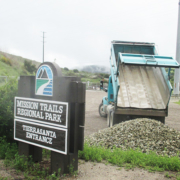Front-Line Heroes
Name: Austin Casey
Job: San Diego County Water Authority system operator
Family: Wife, Mina; three children
Task during the pandemic: “As systems operators we are here to ensure the aqueduct system keeps water flowing safely and reliably throughout San Diego County. We maintain our daily tasks of operating, water quality sampling, and station checks to ensure all equipment is functioning properly. During the pandemic, we have been reminded of how critical it is to be efficient and effective with our normal duties, so we are ready to take on unforeseen challenges.”
How has pandemic changed the job? “I feel our job is the same during the pandemic. It’s more of adjusting to a new normal and being able to staff the department in a way where everyone feels safe.”
How are you keeping safe? “We say the control room and surrounding office has never looked so clean because of all the sanitizing we are doing. We are also getting used to social distancing and being aware of personal space, because we do work in close quarters. Hand washing and sanitizing all our office equipment, field instruments and trucks has been key to staying healthy.”
“The role we play as critical infrastructure operators may go unseen to many, but we are here to ensure the public receives a safe, secure, reliable supply of water without having to worry about it at all.”

San Diego County Water Authority System Operator Austin Casey is one of the essential workers keeping the region’s water supply safe, reliable and plentiful. Photo: San Diego County Water Authority
The Union-Tribune wants to recognize workers who are still on the job serving the public during the coronavirus crisis.




